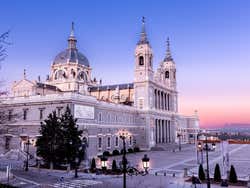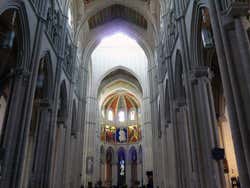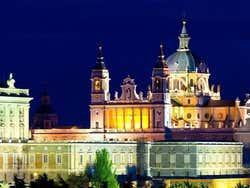
Almudena Cathedral
The Almudena Cathedral is the most important religious building in Madrid. It was consecrated by Pope John Paul II on 15 June 1993, making it the first cathedral to be consecrated outside of Rome.
The Almudena Cathedral is the most important religious building in Madrid. It was consecrated by Pope John Paul II on 15 June 1993, making it the first cathedral to be consecrated outside of Rome.
The construction of la Almudena began on 4 April 1883 when Alfonso XII of Spain set the first stone. The project was driven and designed by the architect Francisco de Cubas.
The temple’s interior is rather surprising since it is completely different to any other cathedral built during the same period; the ceiling and the stained-glass windows being decorated with vivid colours and straight lines, much unlike the classical style.
La Almudena Cathedral Museum
La Almudena Cathedral Museum features numerous items that portray the history of the diocese of Madrid. The museum is made up of twelve halls that contain mosaics, Episcopal symbols and vestments.
Although the museum is small, it is a lot more interesting to visit than it would seem at first.
Climbing the dome
Unlike certain cathedrals like Notre Dame in Paris, the Cathedral’s dome is neither spectacular nor does it provide good views of Madrid. We suggest exploring this part of the church only if you're also going to visit the museum, since the entrance ticket includes access to both parts.



Schedule
Monday to Sunday from 10:00 to 20:30 (September to June) or 21:00 (July and August).
Museum and dome: Monday to Saturday from 10:00 to 14:30.
Price
Entrance to the cathedral: free/donation of € 1 (US$ 1.17) per person.
Museum and dome:
Adults: € 7 (US$ 8.22)
Students up to 25 years old, people between 10 and 16 years old, over 65s, unemployed, disabled people and pensioners: € 5 (US$ 5.87)
School fee: € 3 (US$ 3.52)
Children under 9 years old: free entrance.
Nearby places
Royal Collections Gallery (78 m) Royal Palace of Madrid (285 m) Plaza de Oriente (320 m) Teatro Real of Madrid (421 m) Sabatini Gardens in Madrid (480 m)

